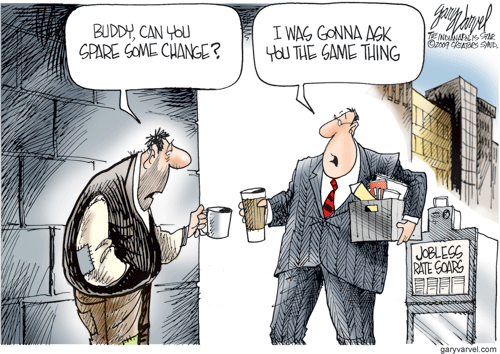Monday, May 23, 2011
Huffington Post on cyclical vs. structural unemployment
America’s current unemployment crisis is predominately the result of a pronounced dip in the business cycle, according to a new paper by economists at the International Monetary Fund. But, structural factors, like shortages of highly-skilled laborers, is keeping the jobless rate high, too, the paper finds. Read the rest of Huffington Post’s story.
America’s current unemployment crisis is predominately the result of a pronounced dip in the business cycle, according to a new paper by economists at the International Monetary Fund. But, structural factors, like shortages of highly-skilled laborers, is keeping the jobless rate high, too, the paper finds. Read the rest of Huffington Post’s story.
Posted by at 3:49 PM
Labels: Inclusive Growth
Wednesday, May 18, 2011
The Elusive Quest for Energy Security
The price and security of foreign oil has Western policymakers talking more urgently about energy independence — again. But according to Prakash Loungani, an economist and advisor to the IMF’s Research Department, to insulate themselves from the economic effects of oil spikes, countries are going to have to learn to work together.To continue reading see the recent article on the Globalist website.
The price and security of foreign oil has Western policymakers talking more urgently about energy independence — again. But according to Prakash Loungani, an economist and advisor to the IMF’s Research Department, to insulate themselves from the economic effects of oil spikes, countries are going to have to learn to work together.To continue reading see the recent article on the Globalist website.
Posted by at 1:14 PM
Labels: Energy & Climate Change
Thursday, May 5, 2011
New Evidence on Cyclical and Structural Sources of Unemployment
My new paper on cyclical and structural sources of unemployment provides cross-country evidence on the relative importance of cyclical and structural factors in explaining unemployment, including the sharp rise in U.S. long-term unemployment during the Great Recession of 2007-09. About 75% of the forecast error variance of unemployment is accounted for by cyclical factors-real GDP changes (?Okun‘s Law?), monetary and fiscal policies, and the uncertainty effects emphasized by Bloom (2009). Structural factors, which we measure using the dispersion of industry-level stock returns, account for the remaining 25 percent. For U.S. long-term unemployment the split between cyclical and structural factors is closer to 60-40, including during the Great Recession.
My new paper on cyclical and structural sources of unemployment provides cross-country evidence on the relative importance of cyclical and structural factors in explaining unemployment, including the sharp rise in U.S. long-term unemployment during the Great Recession of 2007-09. About 75% of the forecast error variance of unemployment is accounted for by cyclical factors-real GDP changes (?Okun‘s Law?), monetary and fiscal policies, and the uncertainty effects emphasized by Bloom (2009). Structural factors, which we measure using the dispersion of industry-level stock returns,
Posted by at 3:21 PM
Labels: Inclusive Growth
Sunday, May 1, 2011
Econbrowser on cyclical vs structural unemployment
Menzie Chinn provides a nice summary of the Madison conference on long term unemployment.
Menzie Chinn provides a nice summary of the Madison conference on long term unemployment.
Menzie Chinn Read the full article…
Posted by at 8:03 PM
Labels: Inclusive Growth
Subscribe to: Posts







